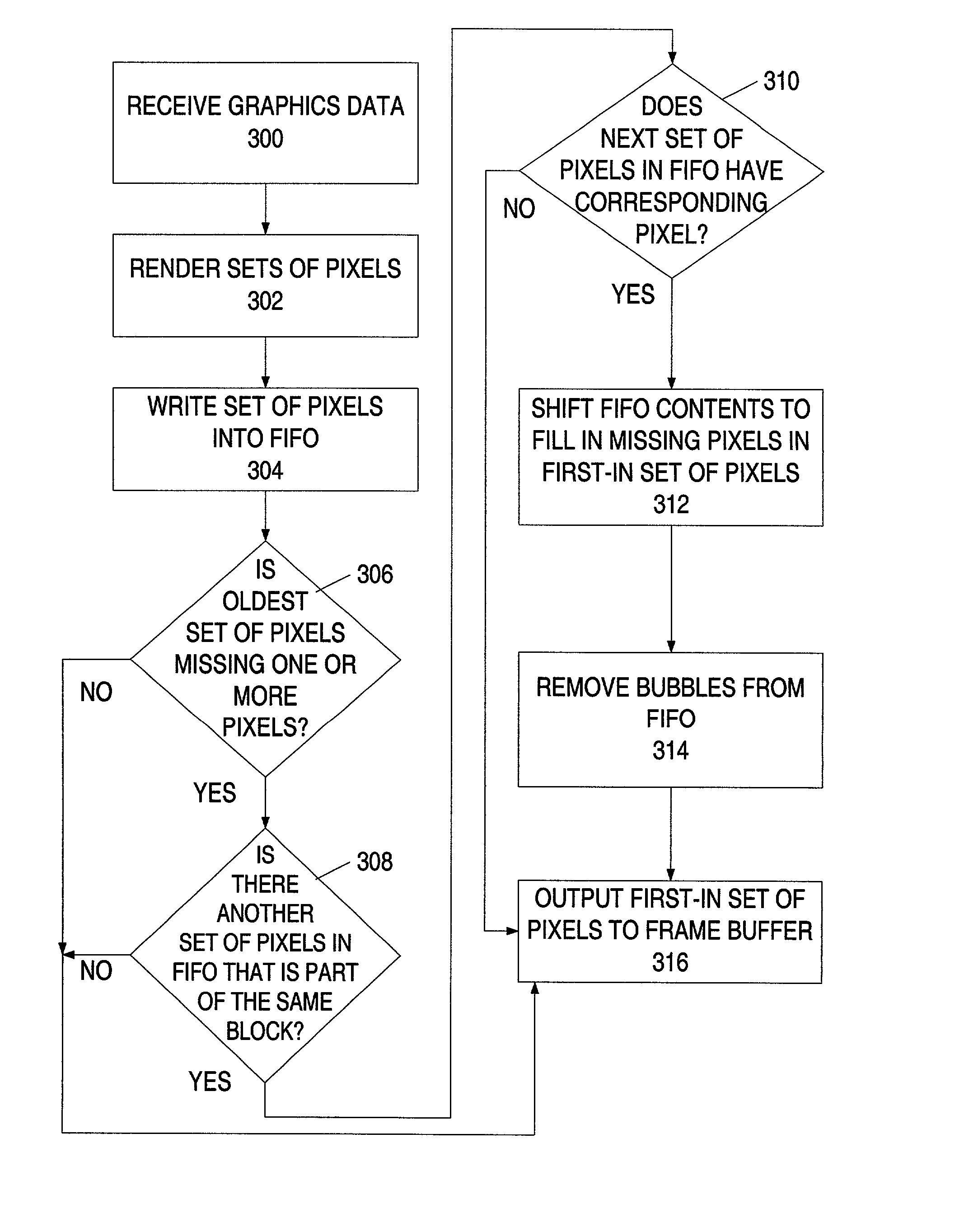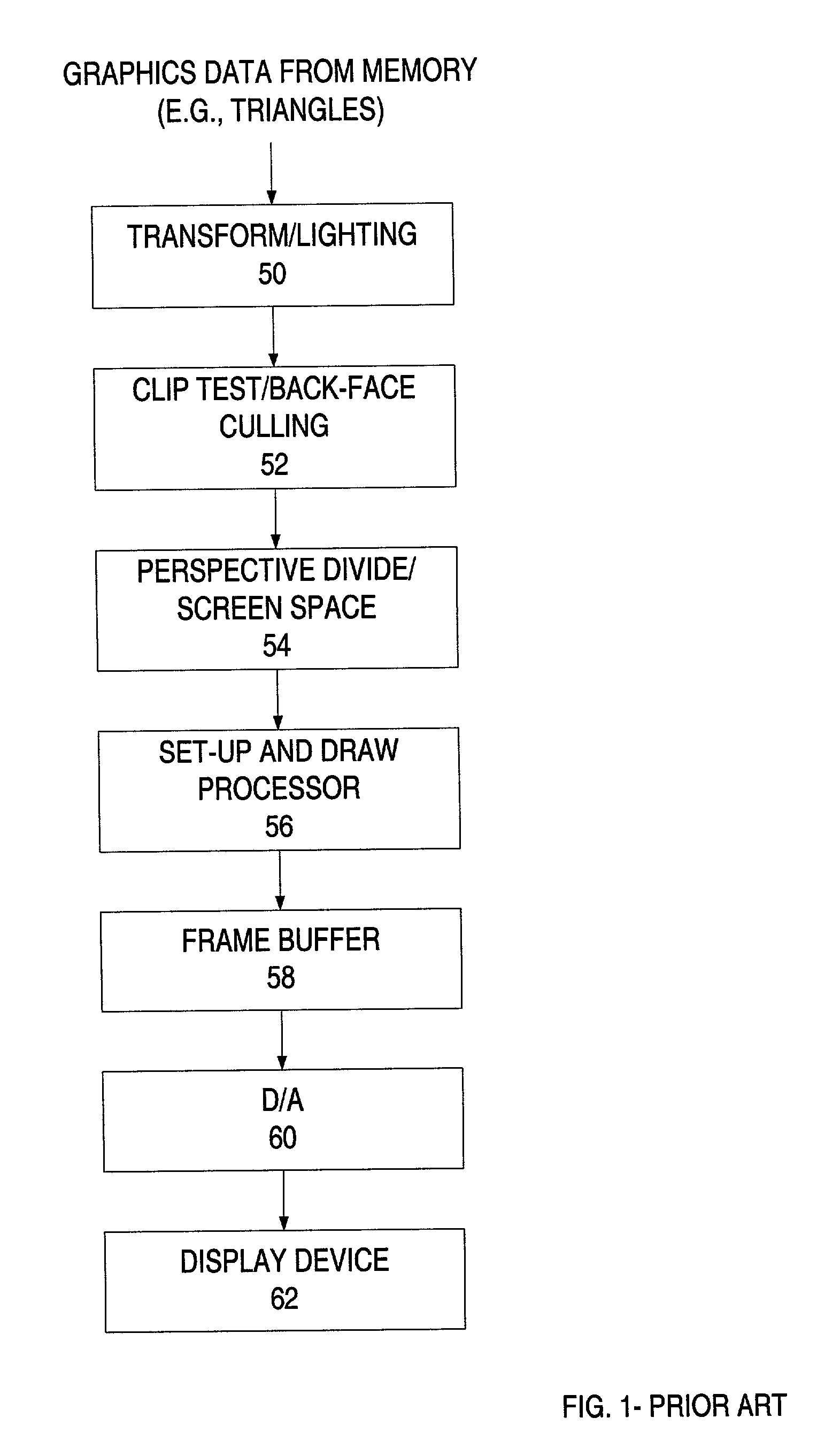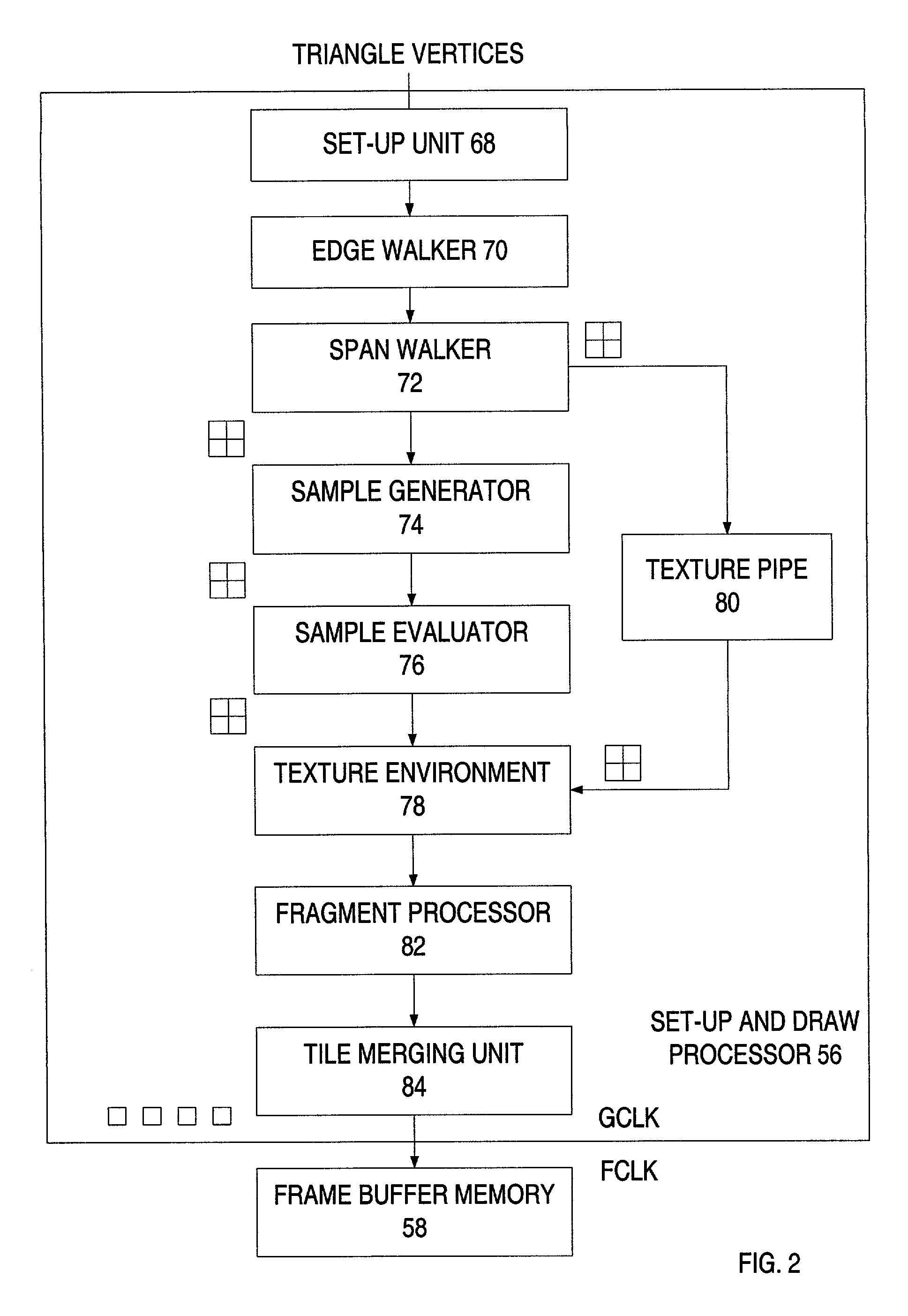Rasterization using two-dimensional tiles and alternating bins for improved rendering utilization
a technology of rasterization and alternating bins, applied in the field of computer graphics systems, can solve problems such as fragmentation, less than ideal datapath utilization, and rasterization algorithm that calculates tiles
- Summary
- Abstract
- Description
- Claims
- Application Information
AI Technical Summary
Problems solved by technology
Method used
Image
Examples
Embodiment Construction
[0033] Turning now to FIG. 2, details of one embodiment of a set-up and draw processor 56 configured to use tiles are shown. As the figure illustrates, set-up and draw processor 56 receives triangle vertices e.g., position information such as x and y coordinates) along with associated data (e.g., color and alpha information). The set-up unit 68 computes edge slopes and plane slopes that are used to setup the triangle for walking. This information is passed down to edge walker 70 along with the vertex data. Edge walker 70 walks along the major edge of the triangle generating two spans per clock cycle. These spans are then conveyed to span walker 72. Span walker 72 generates 2.times.2 tiles along with vertex and slope information. Sample generator 74 receives this information and generates samples, which are then evaluated in sample evaluator 76.
[0034] Texture pipe 80 is configured to generate texture information for the tiles proceeding in parallel through the sample generator 74 and...
PUM
 Login to View More
Login to View More Abstract
Description
Claims
Application Information
 Login to View More
Login to View More - R&D
- Intellectual Property
- Life Sciences
- Materials
- Tech Scout
- Unparalleled Data Quality
- Higher Quality Content
- 60% Fewer Hallucinations
Browse by: Latest US Patents, China's latest patents, Technical Efficacy Thesaurus, Application Domain, Technology Topic, Popular Technical Reports.
© 2025 PatSnap. All rights reserved.Legal|Privacy policy|Modern Slavery Act Transparency Statement|Sitemap|About US| Contact US: help@patsnap.com



